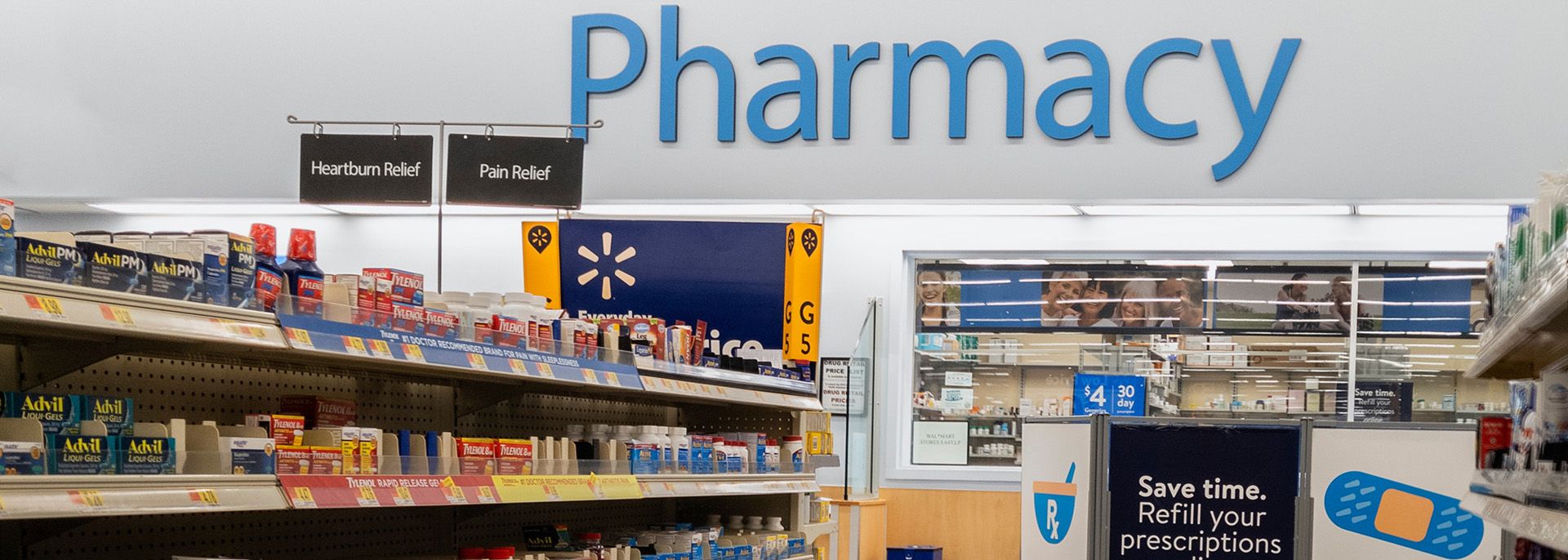Developments in the pharmacy market: An analysis of current trends and future challenges

The pharmacy market is facing profound change. Traditional structures and business models are increasingly being challenged by economic pressure, digitalisation and changing customer behaviour. This white paper outlines the most important developments in the pharmacy market, paying particular attention to the current situation and future trends.
1. Pharmacy demise and economic pressure
With one/two closures per day, there has been a dramatic trend of pharmacies dying out in recent years. While there were still 18,068 pharmacies in Germany at the end of 2022, there were only 17,733 at the end of the third quarter of 2023. Many pharmacies are seeing their profitability jeopardised by falling gross profits, price pressure from mail-order pharmacies and political cost containment measures (e.g. mandatory discounts for pharmacies to health insurance companies). This is exacerbated by a massive shortage of staff, which is affecting the performance of many pharmacies.
The ban on multiple and third-party ownership is both a blessing and a curse. On the one hand, it ensures the regional survival of many pharmacies. On the other hand, entrepreneurial room for manoeuvre is severely limited by restrictions on capital inflows and synergies through scaling.
2. Digitalisation and mail order in the pharmacy market
Mail order, digitalisation and the current introduction of electronic prescriptions are massively changing customer behaviour in the pharmacy market. The market share of mail-order pharmacies and digital pharmacy platforms for pharmacy-only medicines, which can be purchased in pharmacies without a doctor's prescription, is already over 20%. For prescription-only products, the share is currently 1.2%, although the introduction of electronic prescriptions (e-prescriptions) is expected to lead to rapid and significant growth.
The e-prescription opens up potential both for optimising care through better interaction checks and medication management for chronic patients and for greater convenience in care, for example through same-day delivery, which saves multiple trips to the pharmacy. Electronic patient records and a digital medication plan create additional opportunities for improved patient care. Digital and telemedical services, online consultations and "AI-supported remote diagnostics" would be possible, for example.
3. New players in the healthcare market
In the midst of these changes, new and powerful players are positioning themselves in the healthcare sector. For example, Christoph Werner, CEO of dm drogerie markt, has recently announced that he intends to offer health services in the more than 2,000 dm shops in future. In line with his vision, preventative and health consultations will be provided, vaccinations offered, diagnoses made and medicines dispensed.
Drugstore discounters and supermarkets are already among the most important sales channels for nutritional supplements and medical products. Vitamins and minerals are most in demand here. The cold segment is experiencing annual sales increases, as are the stomach and digestion, muscle, nerve, fitness and eye ranges.
It is therefore not surprising that the expansion of healthcare providers beyond doctors' surgeries and pharmacies is already well established in other countries. In the USA, for example, drugstores with integrated pharmacies generate two thirds of their sales with products or services that are reserved for pharmacies and medical service providers in this country.
4. Pharmacy light
The momentum of change is intensified by an announcement by the Federal Minister of Health. In a published ‘Key points paper on reducing bureaucracy in the healthcare sector’, various regulatory requirements for pharmacies are to be reduced. At the centre of the discussion is the intention to enable ‘pharmacy light branches’, which envisages a significant downgrading of the standard compared to the current regulations.
In pharmacy branch networks, for example, the laboratory and prescription department will only have to be kept at one location. With the option of telepharmacy, i.e. the use of technical equipment for video consultations, medicines can be dispensed in ‘pharmacies light’ by a pharmaceutical technical assistant (PTA) without a pharmacist being present.
If these political plans are actually realised, this will open up completely new options, such as the possibility of so-called shop-in-shop pharmacies, which would also call into question the ban on third-party ownership and open up the possibility of e.g. shop-in-shop pharmacies for drugstores or other chain stores. Previous laws or assumptions such as the prohibition of third-party ownership could be seriously called into question.
5. Challenges and opportunities for the players - what does this mean for pharmacies and drugstores?
First of all, it can be said that the topic of health will become increasingly important in the coming years due to demographic change. Rising life expectancy and increasing morbidity are coming up against declining numbers of doctors and pharmacies and reduced medical capacities. The growing number of older people requires an increasingly modern range of healthcare services, medicines and medical products, while younger people are prioritising quality of life and a healthy lifestyle.
In the context of the developments described above (digitalisation, mail order, etc.), the mail order pharmacy market will see further consolidation among a few powerful players. This is illustrated by a new study by Smile.BI. According to this study, Amazon would be the market leader in the pharmacy market within three years if the e-commerce giant were to enter the market. In the USA, Amazon already ranks second among the ‘top e-pharmacies’.
Drugstores and grocery chains could also offer tangible added value in rural areas with shop-in-shop pharmacies due to their coverage of the area. To do so, however, they would have to rely on business partners in the healthcare sector, which would result in two different scenarios. Partnerships with regional pharmacies could be considered for the operation of shop-in-shop pharmacies. An alternative scenario is a mail-order pharmacy concept, which is becoming more interesting than ever with the introduction of electronic prescriptions. In both scenarios, it will be important to actively utilise customer data through digital direct-to-consumer offers. Especially in combination with ever-improving AI, customer needs could be anticipated based on demographic variables and previous purchases and, if necessary, converted into subscription models. Local pharmacies could also evolve into ‘supply pharmacies’. The focus would then be on comprehensive pharmaceutical services, such as drug therapy safety or care counseling.
Regardless of whether all the ideas in Lauterbach's key issues paper are realised or not, the pharmacy sector faces considerable challenges. Those who manage to build direct customer relationships and actively utilise customer data in order to anticipate patient needs and are also able to maintain sufficient relationship trust despite the high volume of transactions will emerge from this crisis as winners.

